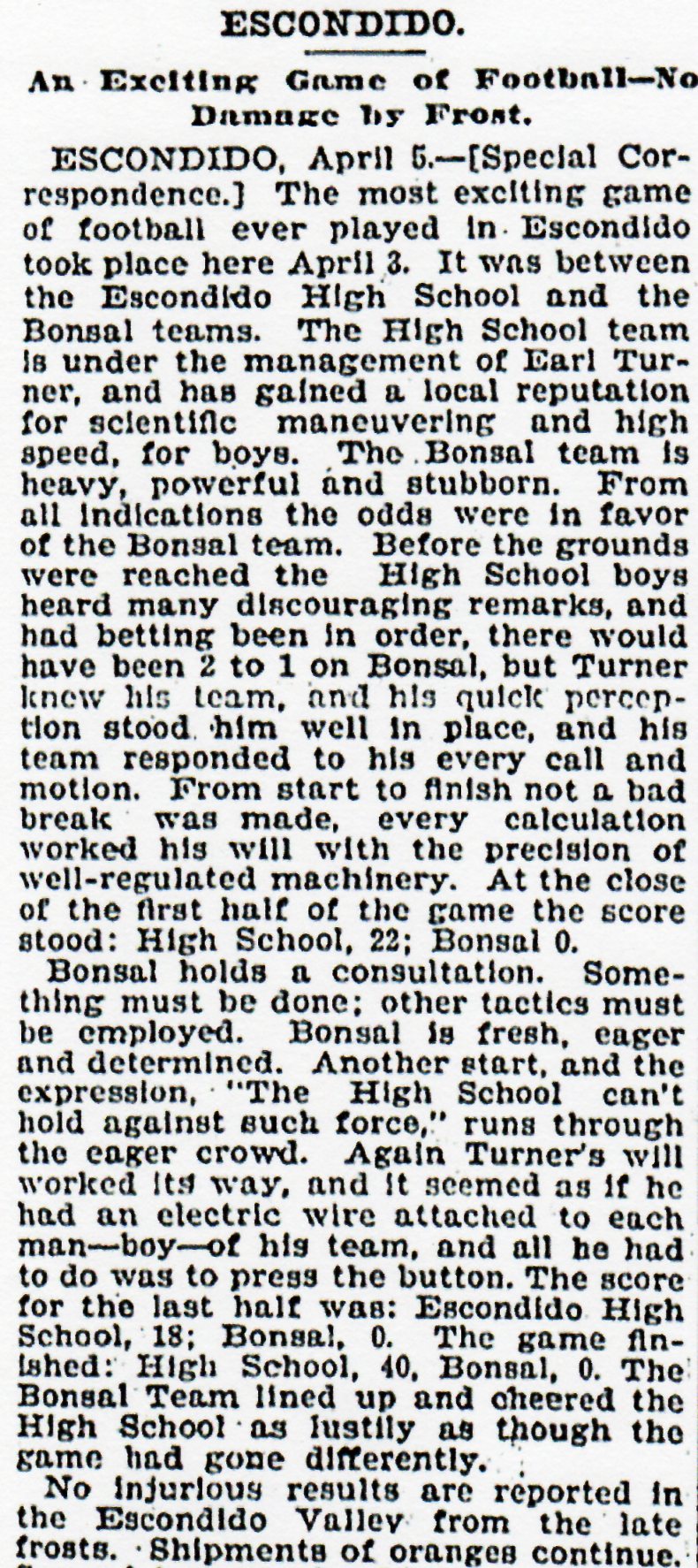1891-1913: Football Finds the Pacific Coast
It had been almost 25 years since Rutgers University and Princeton played in the first American football game in 1867.
A generation later the gridiron sport, more like Australia’s rugby, had made its way West.
To an expanse near the San Diego Bay.
Students from the Russ High School met adults from the “San Diego Football Club” on Christmas Day, 1891, at Recreation Park, where Chicano Park and the on-ramp to the San Diego-Coronado Bay Bridge are located today.
The moment was marked by an 11 a.m. start on the early winter morning, but who won and the final score apparently never was recorded, wrote San Diego High historian Don King in Caver Conquest.
It wasn’t that the game was unexpected. There was an article touting the contest at the top of a page in The San Diego Union on Christmas Day.
The published information (below) was so casual and incidental as to encourage the thought that games had actually been played before.
From such humble beginnings….
More than a century later, ninety high schools in the San Diego Section of the California Interscholastic Federation play more than 1,000 games every season, from September to December.
SLOWLY, SURELY
Football had tweaked local interest but took awhile to catch on after that apparent first foray.
Russ athletes gradually began engaging local military, YMCA, or “town” elevens. Games were scheduled informally, i.e.: “Hey, you guys want to play?”
Other opponents came along later.
Russ played the University of Southern California and lost, 12-4, in 1896 and defeated Escondido, 6-0, in 1898.
There is some question about when two local high schools met for the first time.
Don King wrote that Russ’ 1898 victory was not against Escondido High, but against the Escondido Town team. That would have meant the first meeting between two high schools was later in the season, when Los Angeles High defeated Russ, 11-0.
HIGH SCHOOL OR TOWN?
But John Dahlem, historian for the CIF Southern Section, provided possibly contradictory information from the Los Angeles Times, dated April 7, 1897.
(Football season apparently could be a year-long exercise, not limited to three or four months in the fall).
Escondido High defeated a team from the community of Bonsal (sic), 40-0, on April 3, 1897, according to Times “Special Correspondence” from Escondido.
The article (below) gives notion to the thought that Escondido fielded a squad representing the high school at least a year before the so-called town team’s joust with Russ.
The Escondido coach was one Earl Turner. As with early Russ coaches, Turner represented the school but probably wasn’t enrolled (he is listed in later accounts as a player).
“Town” players, unflatteringly known as “bums”, posed as students and often played and coached those early teams.
According to Don King, a gentleman named Roy Lampson played for Russ in the seasons 1896-1899.
King noted that Lampson also lined up for Fallbrook in 1896, the YMCA in 1897 and, on New Year’s Day, 1898, for the USC Trojans.
Lampson, visiting, working, or residing in Tijuana in 1899, was invited to be Russ’ volunteer coach, but when the Hilltop school began playing that season Lampson was back on the field as a player-coach.
The last paragraph in the Escondido-Bonsall account reported that “No injurious results (to crops) are reported in the Escondido Valley from the late frosts.”
The Times had posted a correspondent dedicated to all news from the valley community.
NEW COACH, NEW VISION
Seth Van Patten, who was born in Illinois in 1873, and came West to teach at Harvard Military Academy in Hollywood in 1900, was hired as a teacher at Escondido High in 1903.
Van Patten’s impact on athletics was apparent at Escondido, where he became the school’s coach, and it was Van Patten who would take a strong lead as Southern California schools strived to organize.
Van Patten was manager of the Southern California championship track and field meet for 39 consecutive years. After retiring from coaching at several Southland schools, Van Patten became Secretary of the CIF Southern Section in 1928, Commissioner in 1930, and retired in 1949.
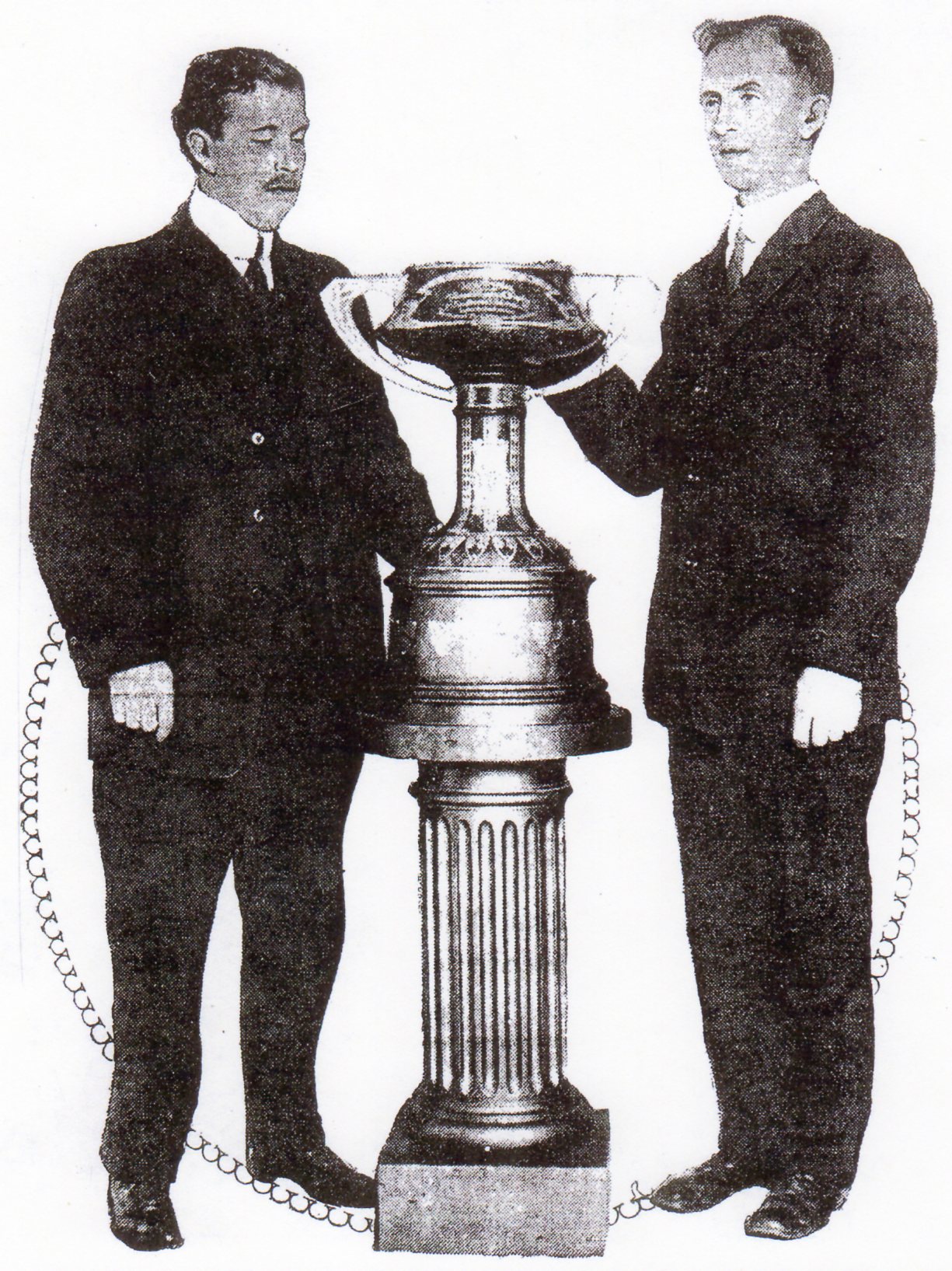
During his tenure Van Patten took pencil to paper and put down some of his recollections, provided by John Dahlem:
“I was not hired to coach the athletic teams (at Escondido)…I let it be known that I would help the football team if no outsiders were allowed to play in the games. My offer was accepted. That was the first year Escondido High School ever played a full team of school boys.”
Van Patten coached two victories over Russ and then turned his attention to baseball.
“…we were unable to get the other schools in the County to play only high school boys on the school team. I gave way to the boys’ insistence and pitched for the Escondido team.”
The young “Professor”, as teachers were addressed, had taken note of the interscholastic athletics picture.
Four leagues “ formed for the purpose of promoting…games in football and baseball” existed in 1900:
–Citrus Belt League, including Ontario Chaffey, Redlands, Riverside Poly, and San Bernardino;
–Channel League, including Oxnard, Santa Barbara, and Ventura;
–Los Angeles County League, including L.A. High, L.A. Poly, Pasadena, Long Beach, Santa Monica, and Whittier;
–Orange County League, including Anaheim, Fullerton, and Santa Ana.
“These leagues were more or less informal organizations. They had no constitution or bylaws, and eligibility rules had not been heard of. Not infrequently boys and young men not in attendance at the high school played in the contests.
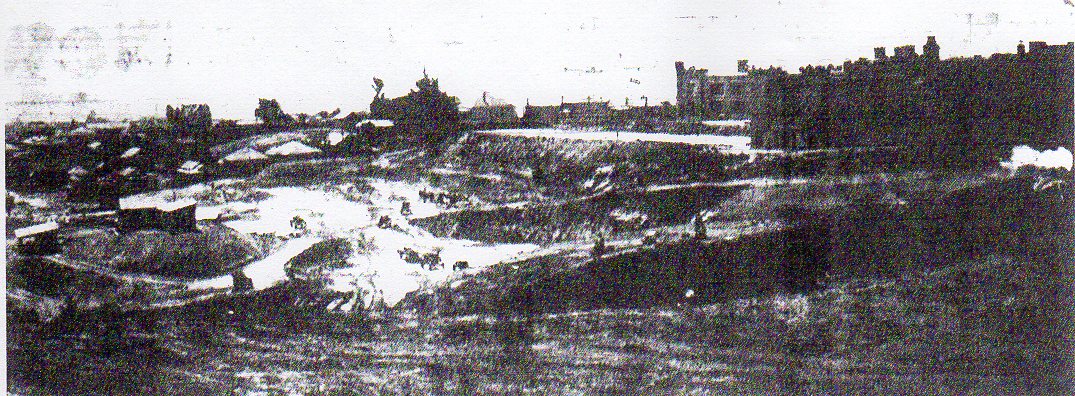
TOWN TEAMS, TOWN BUMS
“The school administrators took no part in the management of the game. If the school was so fortunate as to have a man on the faculty who knew something about athletics the boys got some help.
“Some schools got help from young men of the town. Sometimes the town bums took part in the management.
“The lack of organization and administration under the loose setup led to many disputes. We can readily understand why the average high school principal of the year 1900 gave little encouragement to interscholastic athletics.”
Math teachers and English instructors had little interest or knowledge and had not gone to college to become football players or coaches.
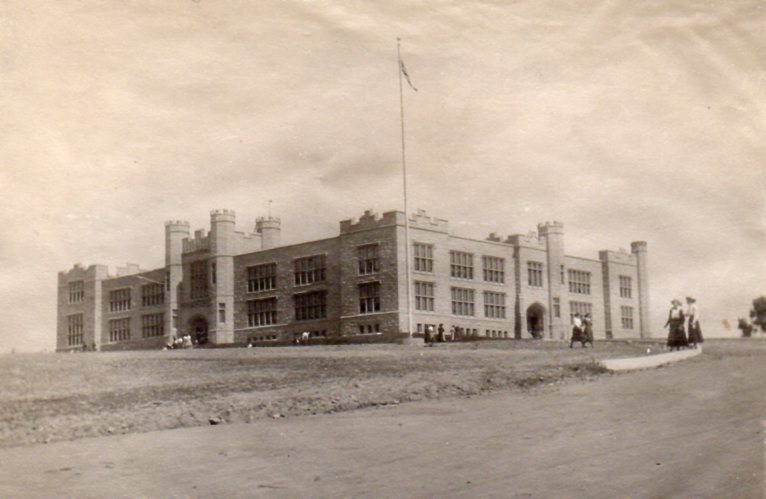
Track and field, a Van Patten favorite, was taking hold. Meets were under the aegis of the “High School Athletic Association of Southern California.”
Van Patten wrote that June, 4, 1904, was the date of the first organized high school track and field meet ever held in San Diego County.
Scored 5 points for first, 3 for second, and 1 for third. Fallbrook had 30 ½ points, San Diego 30, and Escondido, coached by Van Patten, 29 ½.
PRINCIPALS TAKE STEP
The CIF Southern Section had been informally created as the Southern California Interscholastic Athletic Council by high school principals on May 29, 1913.
The school bosses acted during the break between the morning trials and afternoon finals of the all-Southern California track meet in East Los Angeles at the Boyle Heights YMCA, following years of complaints about track-and-field administration by the YMCA and local colleges.
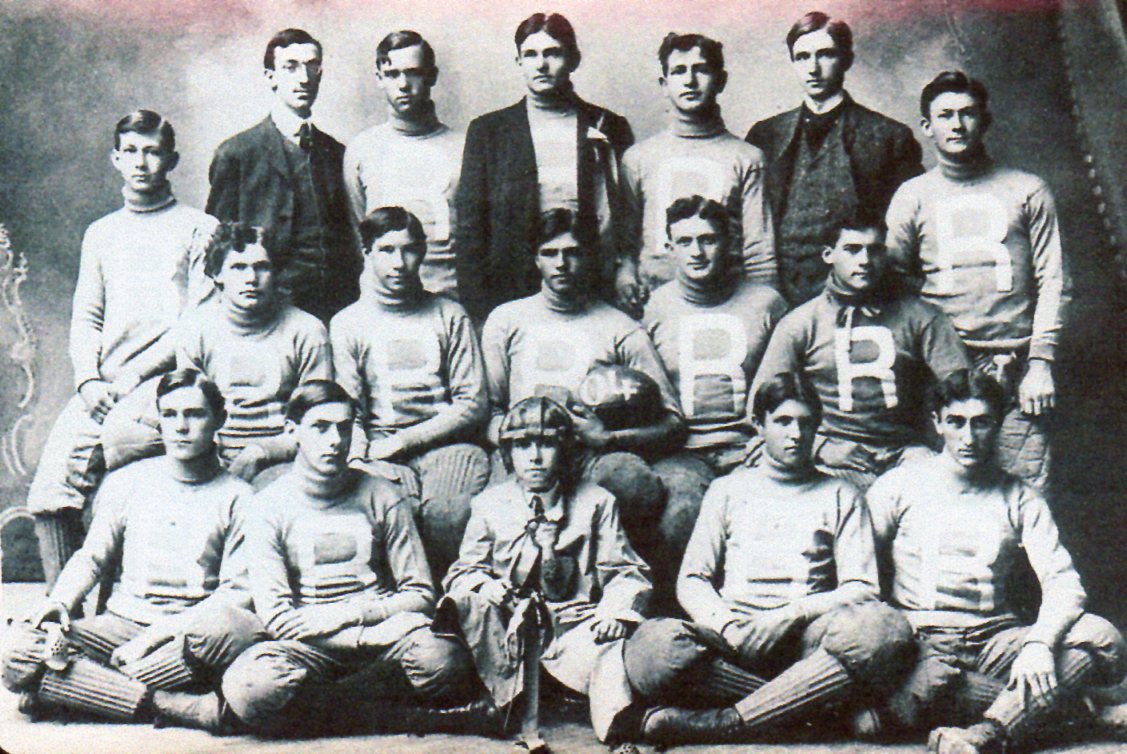
Van Patten had led the drive to take control of the all-Southern California event and had issued a put-up-or-shut-up challenge to the high school community:
“…if they don’t have the guts to run the meet properly, they do not deserve a championship meet.”
There were about 30 high schools in 5 leagues in the greater Los Angeles area in 1913. The football playing entries in San Diego County, including San Diego, Escondido, Coronado, National City, and Army-Navy, also joined the new federation.
The state CIF was founded almost one year later, March 28, 1914, with four separate sections: North Coast, Northern, Central, and Southern.
MORE GAMES, BUT…
Russ picked up a few out-of-area opponents as the ‘nineties drew to a close but travel was difficult, restricted, and time-consuming.
The ’98 trip to Escondido and others at the turn of the century was by tally-ho stagecoach, took more than 4 hours, and often necessitated an overnight stay.
“The counties to the north were further along in their organization of high school athletics than was San Diego County.”
The railroad and the automobile eventually made travel easier, but many hours on the road were necessary throughout San Diego County teams’ long affiliation with the CIF Southern Section.
Santa Ana High, founded in 1889, was Russ’ first Orange County opponent in 1905 and won a pair of games, one here and one in the North.
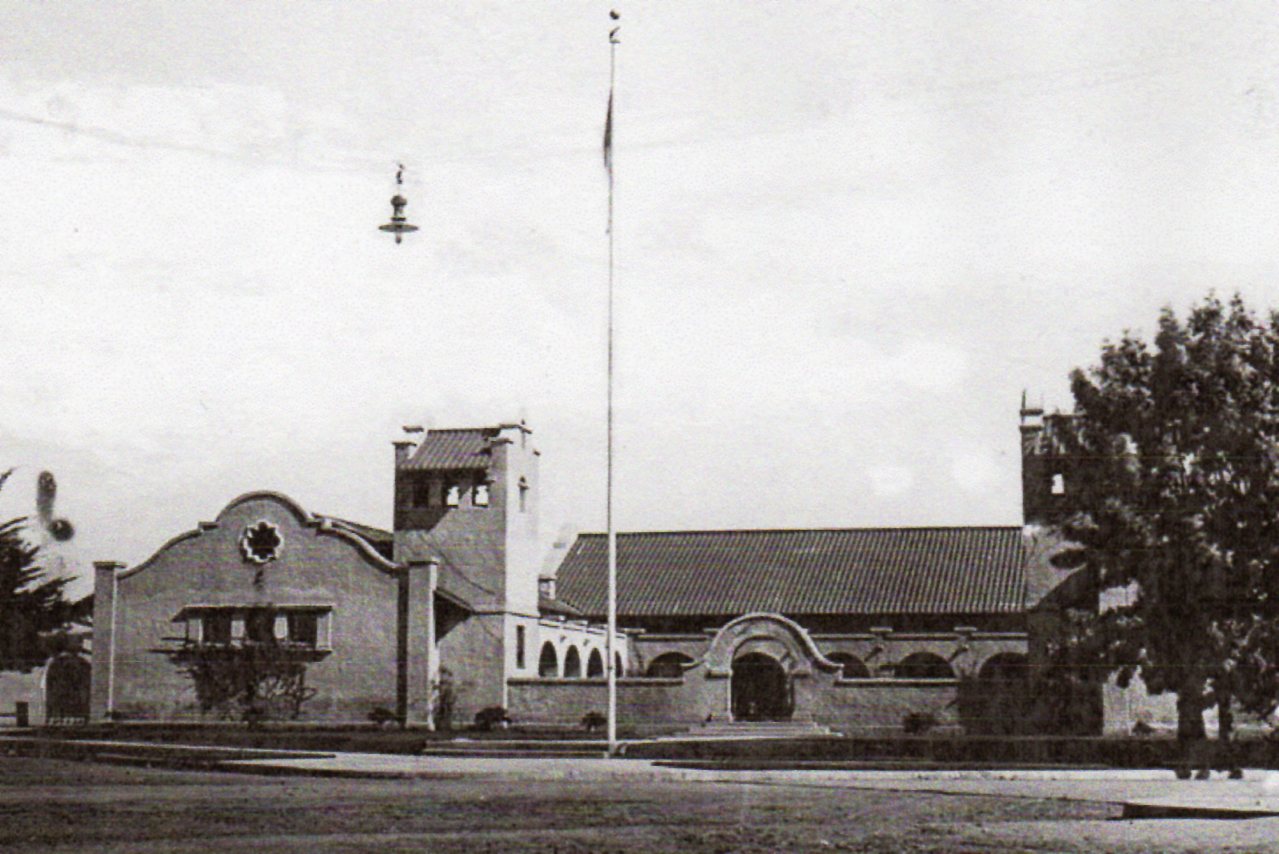
BUSY RIVALS
From 1898 through 1912, Escondido played infrequently, according to published reports, and only against Russ, which became San Diego High in 1907-08.
Theirs was a spirited rivalry. Russ-San Diego led the series with 8 wins against 6 losses and two ties.
Other than a 1919 contest, San Diego and Escondido did not meet again as rival varsities until 1944 and then not again until the 1960 San Diego Section playoffs.
SETH AND ESCONDIDO FACE RUSS
Van Patten coached all sports at Escondido in the 1903-04 school year but was involved in competition with the Russ High only in football and track and field.
In what a headline in The San Diego Union described as “One of the Prettiest Games of Football Ever Seen on Local Field,” Escondido scored a 6-5 victory in 1903 at Russ’ home field, Bay View Park, located next to Beardsley Street in the 1800 block of Logan Avenue.
Van Patten was game referee and San Diego coach David Elliott served as umpire. There also were two linesmen and two timers.
“It was a good game from start of finish, free of rough language and rough play, except the natural roughness of the football game,” wrote a Union reporter, who also mentioned that “after the game the visitors enjoyed life in the city and will start today (Sunday) by tally-ho for home.”
The team that would answer to Cougars in future years won a rematch with Russ, 5-0, the same year on the northern school’s grounds. Russ evened its record at 2-2 with victories over San Diego Normal, the future San Diego State.
Possibly winded by the long hours and double duty as teacher and athletics coach, Van Patten left Escondido after helping coordinate the first track meet in June, 1904, and took a non-coaching position at Ventura High.
NO MORE ‘TOWN’ OPPONENTS
More schools were showing up on the San Diego High schedule, which featured all high schools for the first time in 1911.
San Diego was only 0-6 in home-and-home games against strong Northern opponents Santa Ana, Long Beach Poly, and Pasadena. Its lone victory in the 1-6 campaign was over Escondido.
Ralph Nobel became San Diego High’s first paid coach in 1913 and guided the Hilltoppers to a 3-2-1 record, their best since 1905.
One of those victories was 100-0 over Venice The season ended with a 29-0 victory over Army-Navy. Nobel was killed in action in Europe a few years later,
The next year would be marked by the start of World War I and a vast, new landscape in San Diego.
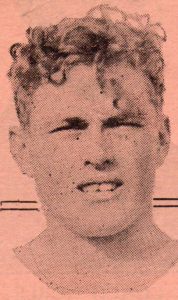
TWO-SPORT STANDOUT
Leslie Dana set the school record of :10.1 in the 100-yard dash and his :51.6 in the 440-yard run was the fastest in Southern California in 1913.
The speedy Dana also was a football standout from 1912-14 when not slowed by injuries.
TRUE GRID
Russ-San Diego had four home football fields before Balboa Stadium: Recreation Park, 1891-96; Bay View Park, 1897-1903; Russ Oval, 1904-13 , and Coronado Country Club Polo grounds, 1914…Russ Oval, known as the “Rockpile”, was located North of the future Balboa Stadium, in what became the stadium’s parking lot…touchdowns became worth 5 points in 1898 and valued at 6 points in 1912…there were no specific time limits to games…15-minute quarters were the norm into the 1920s…time was not a factor in the early going…a game against Escondido in 1902 included a 25-minute half followed by a 30-minute half…Frank (Pug) Mallette scored 28 points and drop kicked 10 points after touchdown in the 100-0 victory over Venice in 1913…the Hillers scored 15 touchdowns in the 1913 game and had quarterly point totals of 33, 7, 20. and 40….

